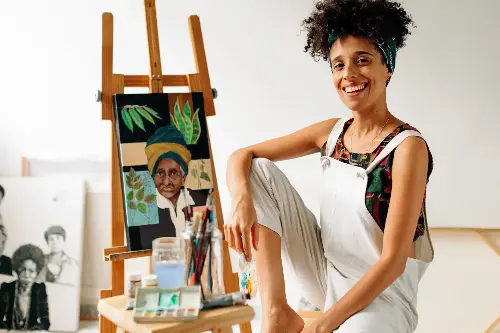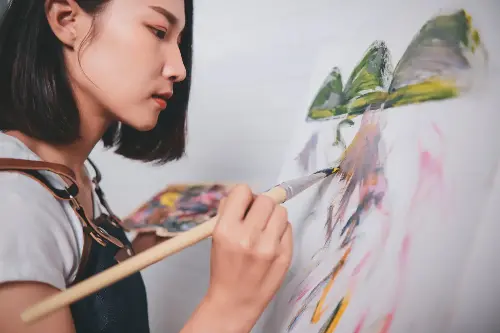Painting is an art form as ancient as civilisation itself, with techniques that have been refined and expanded over millennia. The ability to convey thoughts, create atmospheres, and express emotions through brushstrokes and colour is not just a skill but a form of communication that transcends language and culture. Here we delve into the fundamental techniques that underpin the craft of painting, offering insights that both novice and veteran artists can appreciate.

Understanding the Basics: Tools and Materials
Before embarking on any artistic journey, understanding the tools of the trade is essential. Traditional painting requires a range of materials, starting with paints. Artists can choose between various media such as oils, acrylics, watercolours, or gouaches, each offering different textures and effects. The choice of paint will significantly influence the method and the final appearance of the work.
Brushes too, play a pivotal role. Available in shapes like flat, round, fan, and filbert, each brush provides unique strokes and effects, enabling the artist to achieve precise textures and detailing. Quality brushes can be made from synthetic materials or natural fibres, each reacting differently with various mediums.
Surfaces for painting such as canvases, wood panels, or paper, also impact the outcome. Preferences vary widely among artists depending on the chosen medium and desired effects, illustrating that the foundation of every great painting is the considered selection of materials.
Mastering Techniques: From Colour Mixing to Composition
Colour theory is a cornerstone of painting, involving an understanding of hues, values, and saturation. Mastering colour mixing is vital for creating depth, atmosphere, and emotion within a painting. Techniques like glazing or wet-on-wet painting can be employed to blend colours directly on the canvas, offering a spectrum of gradations and subtleties that bring a painting to life.
Composition, or the arrangement of elements within a work of art, guides the viewer’s eye and establishes the focus and balance of the painting. Employing methods such as the rule of thirds or the golden ratio can assist in creating a dynamic that holds the viewer’s attention and conveys the intended message effectively.

Exploring Styles: Realism to Abstract
Realism demands meticulous attention to detail, capturing life exactly as it appears. Techniques here include careful observation and often extensive preliminary sketches. In contrast, impressionism breaks away from the need to provide exact representations, focusing instead on the effect of light and colour to capture a moment in time. Techniques like short, thick strokes of paint and a lighter, more vibrant palette help achieve this effect.
Meanwhile, abstract painting emphasises concepts and emotions detached from physical reality. It’s defined by an experimental approach, where compositions can be non-representational, using shapes, colours, and forms to achieve its effect. Techniques here are diverse, ranging from splattering and dripping to more deliberate texturing or layering.
Innovative Approaches: Modern and Contemporary Trends
Modern advancements have seen digital techniques increasingly merge with traditional painting. Digital painting allows for undreamed-of precision and flexibility, providing a vast array of textures and effects that mimic traditional materials or create entirely new ones. Artists might also integrate materials such as metal, sand, or fibre to create mixed-media pieces that challenge traditional boundaries and explore new textures and forms.
Cultural Dimensions: Painting Across the World
The cultural context of painting is as varied as its techniques. Western painting traditions have been heavily documented, from the classical realism of the Renaissance to the expressive strokes of the post-impressionists. However, Eastern painting traditions, such as Chinese or Japanese watercolour styles, offer a contrast with their emphasis on brush skills, minimalism, and a philosophy tied tightly to nature.
In Africa and Oceania, traditional arts often incorporate painting into broader elements of fabric design and body art, reflecting broader cultural narratives and beliefs. Understanding these cultural dimensions opens up new avenues for creativity and thematic exploration in painting.

Nurturing Creativity: Continuous Learning and Adaptation
The journey of a painter is one of perpetual growth and adaptation. Joining workshops, viewing other artists' work, and continuous practice are vital. Experimentation with new techniques and materials can lead to surprising discoveries and personal breakthroughs.
Mastering the art of painting is about understanding and harnessing the fundamental techniques, but also about continually seeking new ways to express one's artistic vision. Whether through studying centuries-old methods or incorporating modern technologies and trends, there remains an endless horizon to explore in painting, the first and most enduring of artistic traditions. The canvas awaits, a silent, potent space of potential, ready to be transformed by the artist's unique touch.